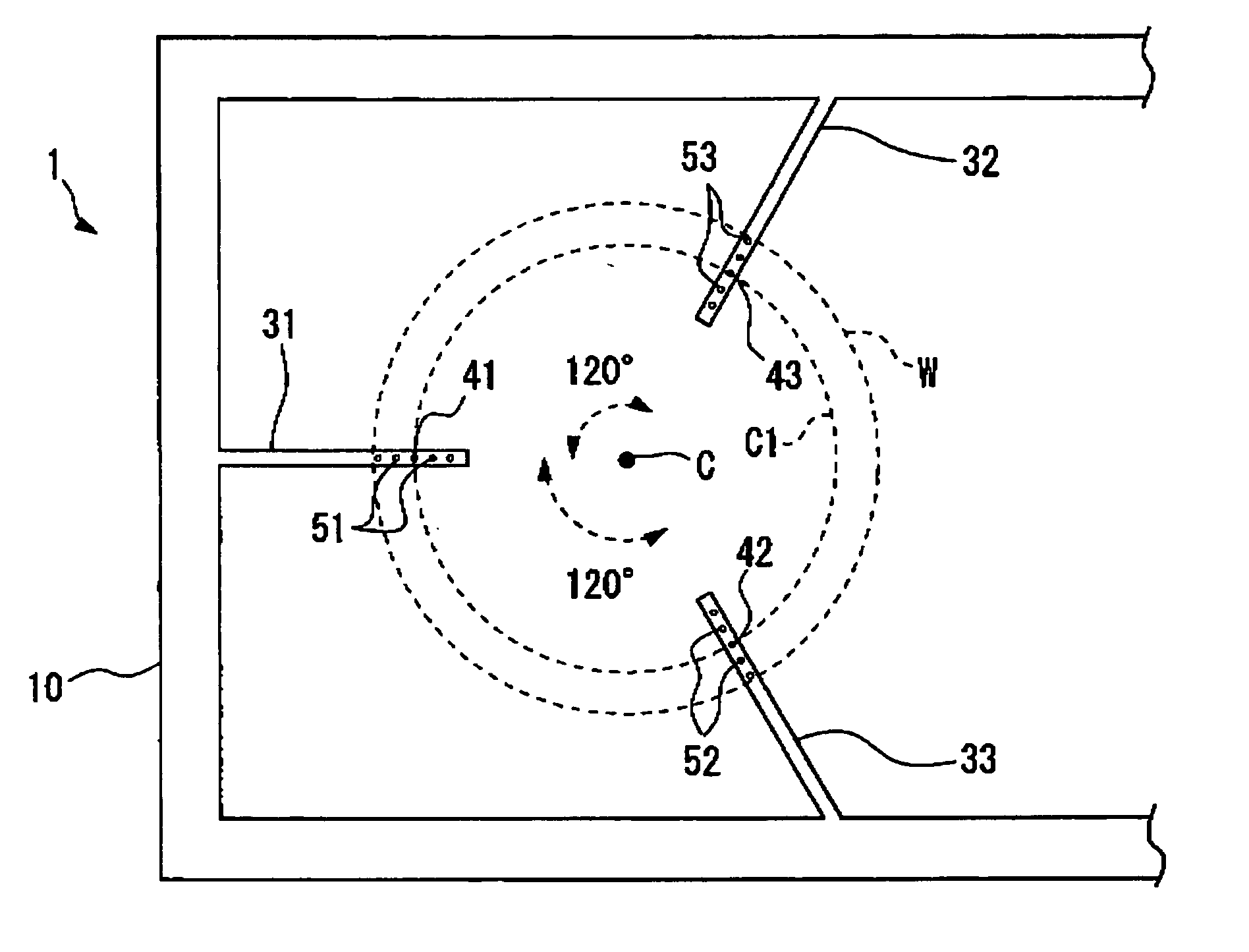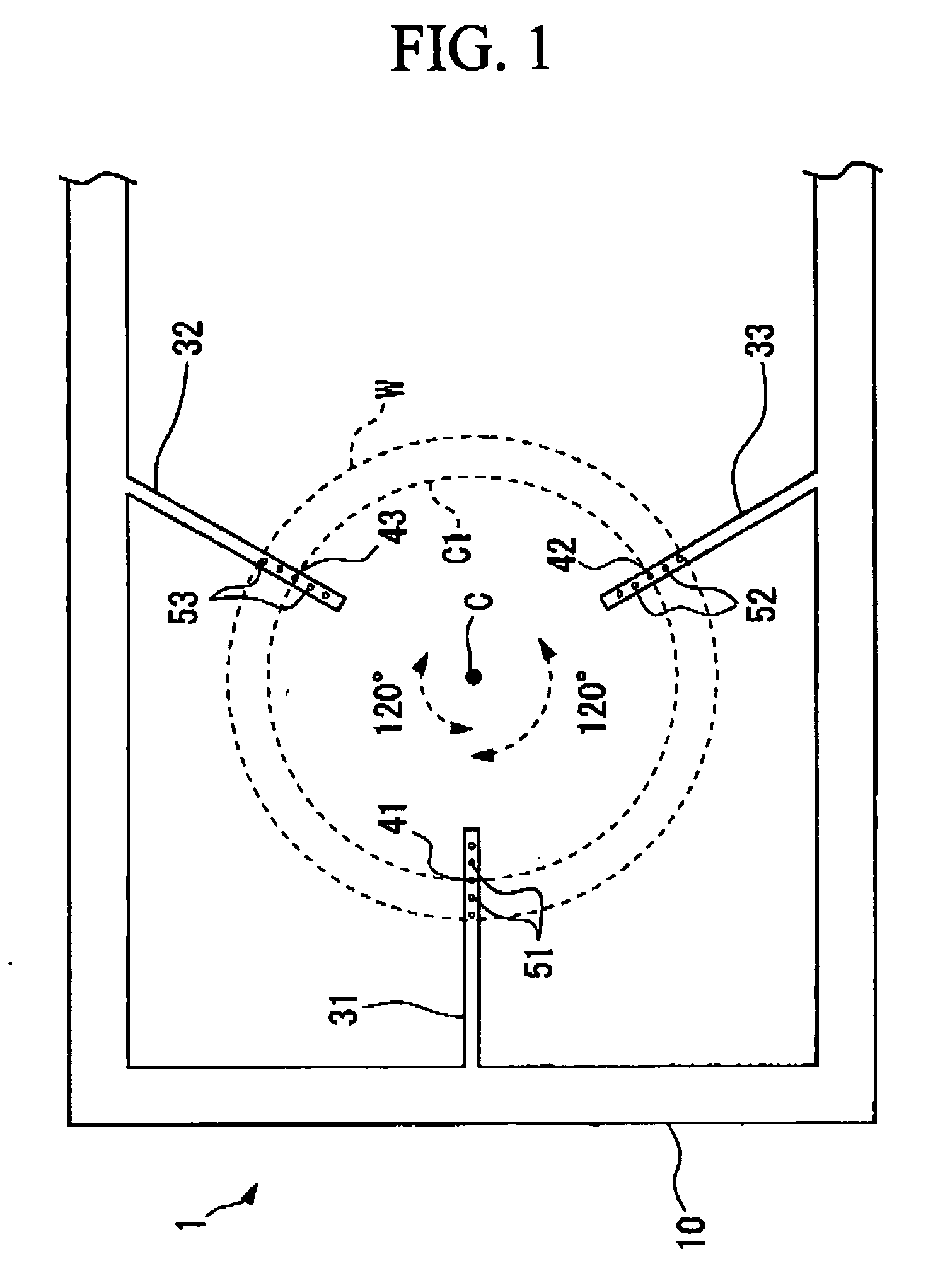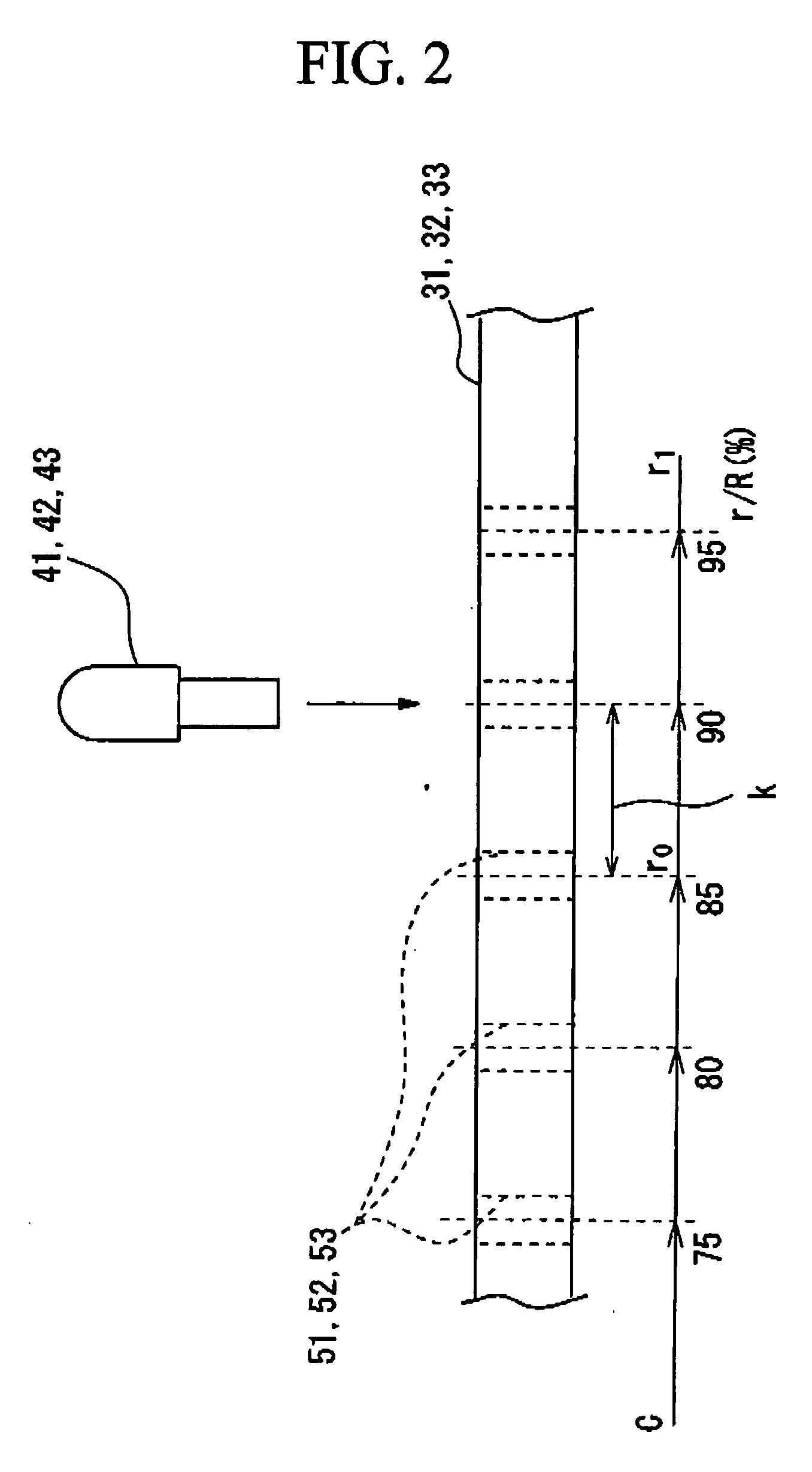Silicon wafer heat treatment jig, and silicon wafer heat treatment method
- Summary
- Abstract
- Description
- Claims
- Application Information
AI Technical Summary
Benefits of technology
Problems solved by technology
Method used
Image
Examples
example 1
[0050] Silicon wafers lacking an orientation flat (notch-type silicon wafers) of 200 mm in diameter, 0.725 mm in thickness are prepared.
[0051] The support projections 41, 42, 43 shown in FIGS. 1 and 3 are positioned around the same circle of radius r and are concentric with the wafer W about the center C. Where the wafer radius is termed R, the positions are controlled so that the r / R value was varied at every 5% interval, from 65% to 90%, and was 97%. The silicon wafer W was mounted on the support projections with the above described arrangement and was supported horizontally. The heat treatment jig 1 being mounted with the silicon wafer was transferred to the heat treatment furnace 20 shown in FIG. 4, and the wafer W was heat-treated for 10 seconds at a furnace temperature of 1250° C.
PUM
| Property | Measurement | Unit |
|---|---|---|
| Fraction | aaaaa | aaaaa |
| Angle | aaaaa | aaaaa |
| Distance | aaaaa | aaaaa |
Abstract
Description
Claims
Application Information
 Login to View More
Login to View More - R&D
- Intellectual Property
- Life Sciences
- Materials
- Tech Scout
- Unparalleled Data Quality
- Higher Quality Content
- 60% Fewer Hallucinations
Browse by: Latest US Patents, China's latest patents, Technical Efficacy Thesaurus, Application Domain, Technology Topic, Popular Technical Reports.
© 2025 PatSnap. All rights reserved.Legal|Privacy policy|Modern Slavery Act Transparency Statement|Sitemap|About US| Contact US: help@patsnap.com



